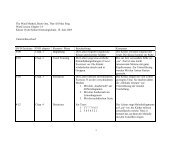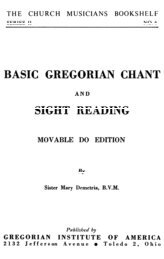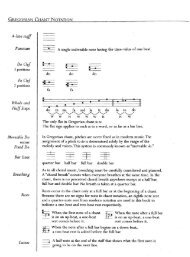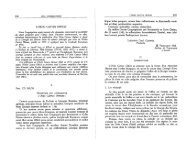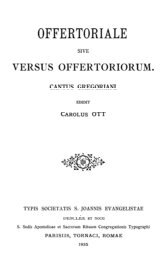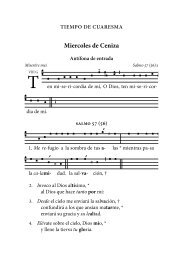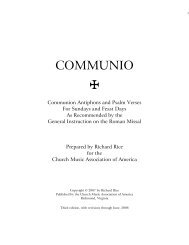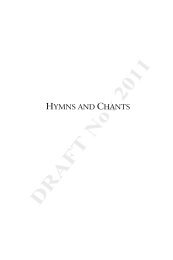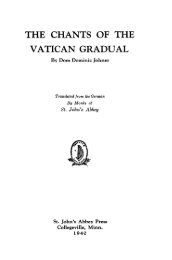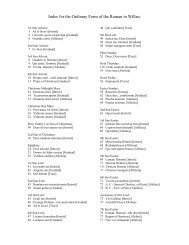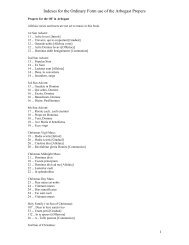Textbook of Gregorian Chant (1930) - MusicaSacra
Textbook of Gregorian Chant (1930) - MusicaSacra
Textbook of Gregorian Chant (1930) - MusicaSacra
You also want an ePaper? Increase the reach of your titles
YUMPU automatically turns print PDFs into web optimized ePapers that Google loves.
20 Part One.<br />
This would be fatal to good Latin pronunciation. The vowel<br />
sounds must be as far as possible uniform, without distinction <strong>of</strong><br />
long or short, open or closed, no matter by what consonant<br />
they may be followed.<br />
Should this rule be neglected, a disagreeable mixed effect will<br />
result, as in English the vowel sounds are modified almost indefinitely<br />
by their position in regard to the consonants. It is particularly<br />
important in singing the long neums to watch that the<br />
fluctuations in the melody shall not produce any change in the<br />
timbre <strong>of</strong> the vowel, e. g. Kyri*. ( x )<br />
A has a broad open full sound, something between the English<br />
a in the word father and the u <strong>of</strong> butter. It is never pronounced<br />
like the English a in can.<br />
E has no exact English equivalent. It is between the e in the<br />
English met and the a in frame, shame.<br />
I is like the English ea in neat or ee in such words as feet,<br />
greet, not as prolonged as it tends to be in the English sheep or<br />
green, but never like the i sound in milk. This is most liable to<br />
be overlooked at the beginning <strong>of</strong> Latin words. Practise inter =<br />
eenter, and inimicus = eeneemeecus.<br />
O as in the English for, half open and very pure and uniform.<br />
Examples : Deo, populo, ora.<br />
U like the oo in the English word boot. Ex. Multus = mooltoos;<br />
secundum = secoondoom, but not too much prolonged. Cp. remark<br />
on /.<br />
Y must be treated as a vowel, and always pronounced like the<br />
Latin /. Ex. Martyr = marteer.<br />
Consecutive Vowels.<br />
As a general rule when two vowels come together each keeps its<br />
own proper sound and constitutes a separate syllable. Each vowel<br />
in the following words, for instance, must keep its own timbre and<br />
length: di-e-i, fi-lw, e-o-rum, a-^-bat, dcvoti-o.<br />
The above rule applies to OU and AI (both vowels heard<br />
separately and belonging to two different syllables); Rxs.prout =<br />
p*ro-ut, coutuntur = cp-utuntur, ait = a-it.<br />
Exceptions: AL, (E are pronounced as one sound, exactly the<br />
same as e; see above.<br />
AU and EU. In these cases the two vowel sounds form one<br />
syllable and are therefore uttered as one syllable, but the sound <strong>of</strong><br />
both vowels is distinctly heard. Ex. Lau-da, Eu-ge, Ceu*<br />
(") Be careful too not to sing AV#r-i-e, but



